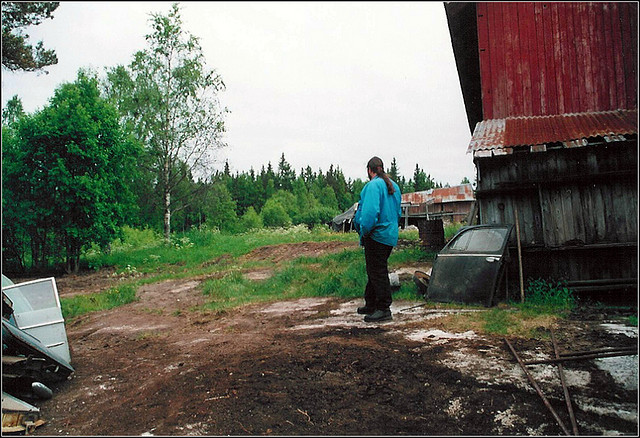Landscaping takes the science of plants and mixes it with equal parts art and passions. You have to know the science of the plant to give it what it wants if it is to thrive where you want it. However, you can also be highly creative with the sheer variety of plants available to you, regardless of where you are or the season.
First, let’s tackle the science since it is the basics of landscaping.
Each plant has a different set of requirements for living. It needs adequate sun, water, and the right soil for its needs. For example, a pine tree likes a lot of sun and well drained soils that are slightly on the drier side. On the other hand, a particular type of hosta prefers shade and well drained, but evenly moist soil. Still, on the wettest end of the spectrum you might find Touch-Me-Not impatiens, which love dark areas with lots of wet soil.
Clearly, this can get confusing if you’re new to landscaping and feeling overwhelmed by the sheer amount of choice. Take it one step at a time, and you’ll be able to make savvy decisions each time you put your spade into the ground.
Step 1: Figure out your climate zone. Knowing your zone information is key to finding plants that are hardy to your area if you have it in mind to plant them once and have them last several years. If you live in the United States this is easy as the USGS has been compiling a zone map.
Once you know what zone you’re in, decide on what kind of plants you want. Do you want something that will last year after year? Look for perennials that are hardy in your zone. If you don’t mind planting year after year, broaden your spectrum with annuals or those that aren’t necessarily hardy in your area.
For example, I live in the Midwest of the United States. I live on the north side of Indianapolis, Indiana, and my zone is 5. I know that roses are hardy in my area, as well are lilies and a lot of other perennials. However, I really like moon flowers, so I plant these as annuals that climb up a trellis we built to go around the window. I know they die every year, and that’s OK — especially because my landlords would be pretty upset if I put an aggressive vine next to the building.
My in-laws live in southern Indiana in Deerborn County. They are zone 6a, which is about the same as we have here in Indy, but the winters are slightly more mild. They have a better chance at growing things that are hardy in zone 6, but it would likely freeze and die if unprotected during the winter.
So, now that you know what zones are and what they mean, it’s time to turn our attention to the sun.
On every plant identification tag there are a few pieces of information: name, description, growing information, sun requirements, water requirements, and often times miscellaneous information.
The nurseries always put the name and description of the plant at the very top with the picture. It helps you decide quickly if you want to put your money where your eyes are, and that’s just the way they like it. Further down the tag, though, you’ll find information regarding what lighting conditions the plant requires to thrive.
Some tags, but not all, include information about how far apart to plant each plant so they can grow to their full size. If you’re lucky, the tags will also have information about how much water the plants like as well.
In rare cases the tags also have miscellaneous nursery information on it regarding size of pot, lot number, and other such internal information.
The key is to always look for the sun information, which will tell you if the plant can thrive in the spot you’ve chosen for it. If it doesn’t match, it’s best to choose another plant — the work involved with keeping it healthy sometimes isn’t worth it. However, as you’ll see in the “art” part of landscaping there are always ways around this rule.
Savvy Tip: If a plant says it likes partial sun, this means about 5 hours of the cooler morning sun, but can tolerate a few hours of the hot afternoon sun. Same goes for partial shade.
Just add water?
Once you’ve got the sun part of it down, the water is the next important step. This information is sometimes on the tags, but other times it’s not. Sadly, there are no general rules of thumbs when it comes to how much water which plants like. Some tropicals, like bougainvilleas, like to be on the dyer side, where as other tropicals like to be wetter. This means it’s best to look up each plant requirements if you have any doubt about it.
Once you know how much water and sun a plant prefers you can match it to the spot you have in mind. Keep in mind, water doesn’t have to be perfect as long as the spot is on the drier side of what the plant likes. You can always water it, while you can’t necessarily drain the area on a whim.
Savvy Tip: Automatic waterers for grass do not water the rest of the plants well most of the time. The water just doesn’t get down low enough into the soil for the roots to draw it up efficiently.
Climate, sun, and water are three things you can’t change, but you can always amend your soil. Learn how in this DIY workshop.
Landscaping is just as much art as it is science.
Landscaping really is as much of an art as it is a science. With so much variety in size, shapes, colours, and textures, it’ll be temping to change your landscape design every few years. The good thing is that you really can with a couple rules of thumb!
Guidance Rule 1: Trees will last longer than shrubs, and shrubs last longer than perennial flowers. When you plan your landscaping, think of trees as a long term investment, so go with something that you love and that adds value to the property. Then, add some shrubs around that will last a few decades if you take care of them. Flowers can last a couple decades normally, but if you tend to them well they can last just as long as any other shrub.
When plotting out your landscaping design, take care to think of the trees as a source of shade long before it gets to full height. Then, you can add flowers and shrubs in places you know they will last for several years into the future. Annuals are great as landscape features in pots, small areas you want to experiment with colour, or areas you know want to change up season after season.
When it comes to edibles, though, there is another layer of fun. Most people don’t think of edibles as decorative, but they can be! A well placed clump of corn is a adds great height to an area in place of grass. Containers can be filled with herbs that flower at the end of their season which adds both texture and a bit of whimsy at the end of the year. And tomatoes? Well, if we can enjoy the look of red berries any time of the year, we can enjoy the look of bigger red fruit just as well.
Guidance Rule 2: Your landscaping is an extension of your personality. After you get an idea of what can work in your area, go for what you like, even if you have to special order something off the internet. And, don’t be afraid to mix and match just to have some fun! If you’re the type of person that likes to change it up more often, go for more annuals than perennials and enjoy the flux of seasons.
Featured image: Tom E. on Flickr




